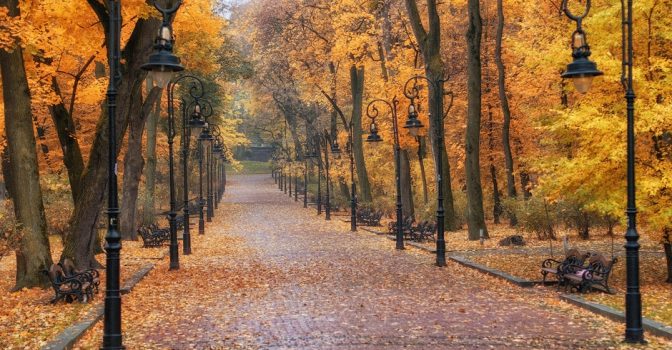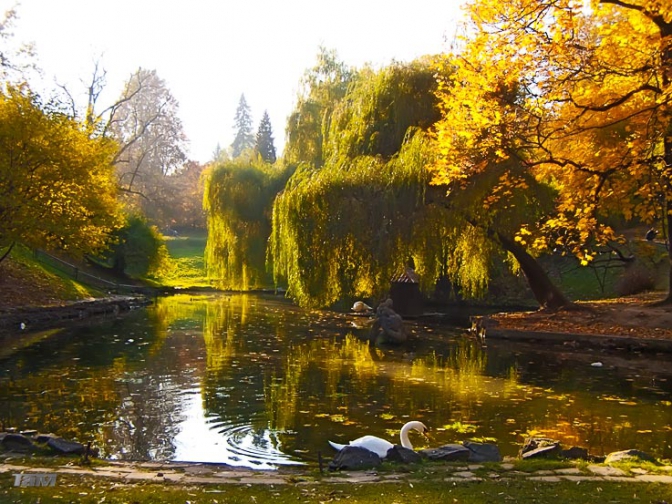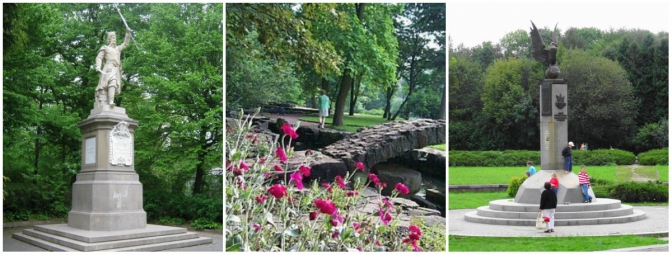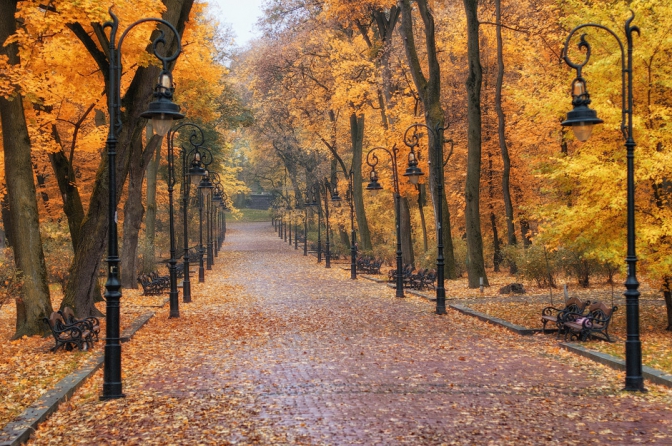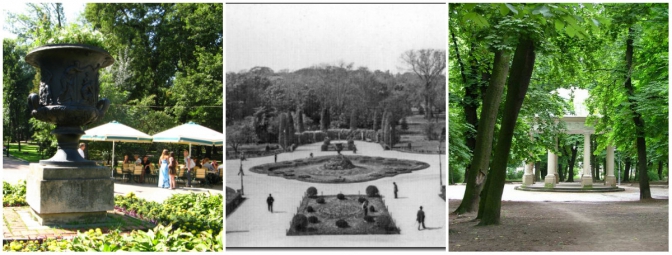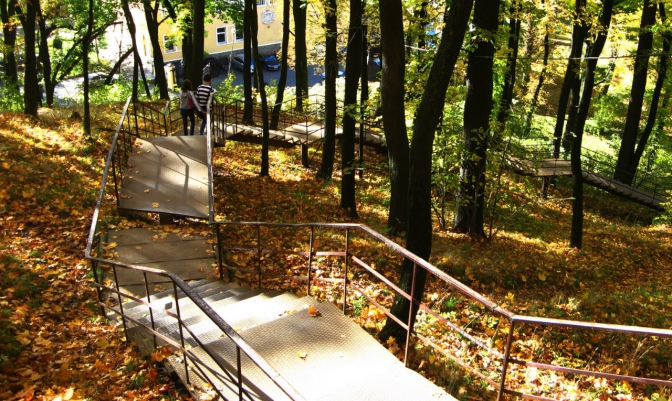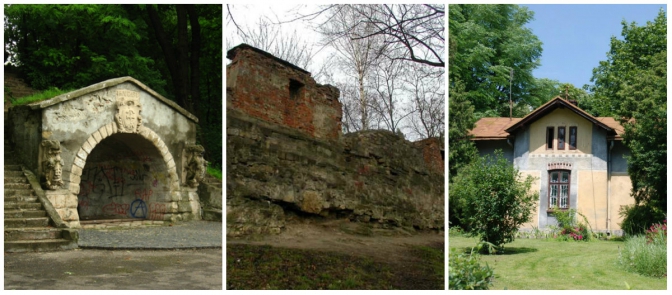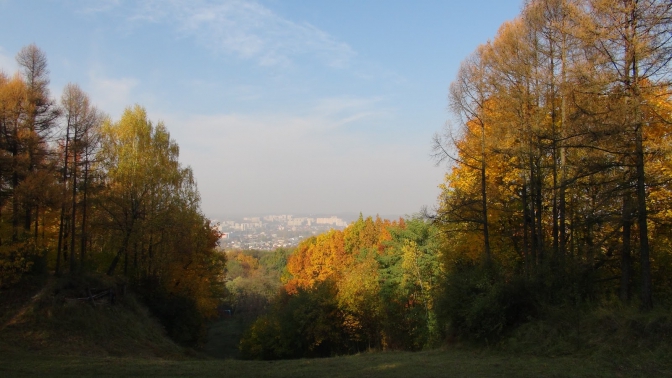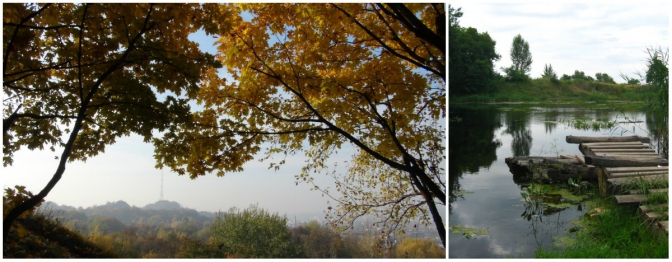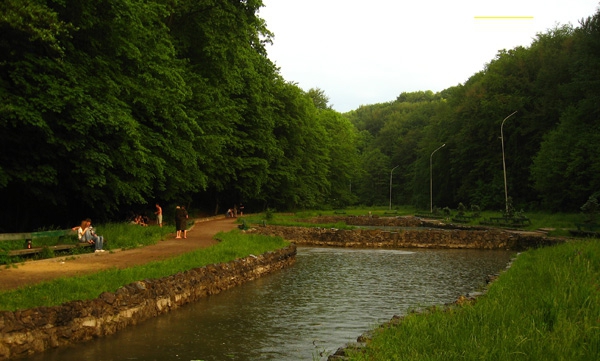Lviv is famous not only for its ancient architecture and cozy coffee houses but also for a variety of wonderful parks which look like green patches on the background of urban landscapes. They are no less ancient and beautiful than the buildings in the city center, for this reason, they deserve to be on the list of the most demanding tourist.
Stryiskyi Park (Kilinski Park)
Photo: photoclub.com.ua/photo/533162/
It is one of the most beautiful and oldest parks not only in Lviv but also in Ukraine; a landmark of park and garden art of a national importance. The park was opened in 1879; its total area covers 52.1381 hectares. Apart from the majestic landscapes and the opportunity to feed the swans that swim in a pond, one can find many other interesting entertainments there.
photo: nash.lviv.ua, panoramio.com, lviv.restgeo.com
1. In 2004, a memorial sign “Lviv – the Motherland of the Ukrainian Football” was installed in the park. It was dedicated to the 110 th anniversary of the emergence of football in Ukraine. This is where 110 years ago the first match between Lviv Sokil and Krakow team took place, where Sokil won 1: 0.
2. There grow more than 200 species of trees and plants in Stryiskyi Park. Once, there was a conservatory, a rock garden, as well as a sycamore and linden avenue. Red oak, tulip tree, magnolia, Weymouth pine, Japanese lilac tree, Manchurian aralia, and Ginkgo biloba grow here.
3. In the middle of the park, there is a monument to Jan Kilinski, who was one of the participants of the uprising led by Tadeusz Kosciuszko. The work on the construction of the monument started in 1888. It was assigned to the famous sculptor Julian Markowski. A big boulder of which the sculptor had to make the monument was delivered from Mykolaiv to Lviv. The finished sculpture was unveiled on June 18, 1895.
Ivan Franko Park (also, Kostiushko Park, Jesuit Garden)
Photo: foto.te.ua/authors/kadryk/photo/34819
It is considered to be the oldest municipal park in Ukraine. The park covers the territory of about 11 hectares. It is located in front of the main building of Lviv National Ivan Franko University. The history of this park dates back to the late XVI century. The founder of the park was Antonio Massari, who gave his family park to the city as a present having landscaped the garden to an Ital design. Later, the city gardener, Bauer, replanned the park according to the design of English parks of that time.
Photo: wikipedia.org, skyscrapercity.com
1. Perhaps, everyone who had once walked in this park payed attention to the rotunda in its center. It is a pavilion rotunda with the Doric colonnade typical to the parks of the Romanticism period. The rotunda was built in 1835. In the 1950’s brass bands and harmonica players performed here. People used to come to the pavilion to have a rest, listen to music, and dance.
2. At the entrance to the main avenue of the park, there is a relief vase (1839), which, as interpreted by Bertel Thorvaldsen, depicts “The flow of human life”. Once, this vase adorned the main entrance to the park.
3. Long time ago, the main entrance to the oldest Lviv park on the side of the Galician Sejm (now Ivan Franko National University of Lviv) was framed by two stone obelisks depicting lion heads (not preserved till nowadays) and a flowerbed, in the center of which the abovementioned vase was placed. In addition, there was a range of pedestals with the busts of famous people of Lviv. They included the journalist Jan Dobrzanski, theater director Jan- Nepomuk Kaminski, social activist Prince Leon Sapieha, artist Artur Grottger, and poet Count Josef Dunin-Borkowski, the founder of Samuel Glowinski Educational Institution. The monuments were built in 1894-1896, by the sculptors Antoni Popiel and Tadeush Baronch.
The Lviv High Castle Park
Photo: thecity.com.ua
It is situated on the slopes of the Castle and Knyazha Mountains, at a height which opens a spectacular view of the city. The park was founded in 1835; its total area covers 36.2 hectares. Ascending to the observation deck of the High Castle is a task number one for those who come to see Lviv. However, not everyone knows that on the way to the top one can walk through splendid alleys with centenary trees and interesting history.
Photo: wikipedia.org, oko.kiev.ua, lviv.afisha-city.com.ua
1. In 1845 a decorative grotto with a well was built on the lower terrace of the park. The sculptures of stone lions, which once adorned the ancient City Hall, were put on both sides of its entrance. The stone lions, created by the sculptor Bernard Dickembosch, hold the shields with the arms of noble Lviv bourgeois Erasmus Sixtus and Jan Julian Lorencowicz. This cave was once called “The Suicide Cave” because, according to legends, lovers who were not meant to be together used to commit suicides there. However, there is no written evidence of any specific cases of suicide on this place.
2. On the upper terrace of the park, there is an artificial hill (Union of Lublin Mound) with an observation deck (413 meters above sea level), created in the years 1869-1900 by the Polish community of the city to commemorate the 300 th anniversary of the Union of Lublin. At the foot of the hill, there are the remains of the defense wall of the High Castle built by Polish kings, from which the material for the construction of the mound was later taken.
3. The house of a gardener can also be found in the park. Built in 1892, it completes the chestnut tree alley. Many exotic plants including magnolia, catalpa, copper beech, Paeonia suffruticosa, Hydrangea macrophylla and others grow here. There is also a memorial sign in honor of Maxim Kryvonis.
Znesinnya Regional Landscape Park
Photo: vchaban.blogspot.com
Znesinnya Regional Landscape Park is a perfect place for those who like active walks and impressive natural landscapes. The park has the status of an object of Nature reserve fund of Ukraine. In its territory, the Open-Air Museum of Folk Architecture “Shevchenko's Grove” is situated. Its area covers 312.1 hectares. Znesinnya Park is the youngest of all parks on the list; it was founded in 1993 to preserve and restore the unique natural and historical complex of Znesinnya ridge and adjacent areas of ancient settlements – Znesinnia and Kryvchytsi.
Photo: vchaban.blogspot.com, city-adm.lviv.ua
1. The park is situated on the watershed of the Baltic and the Black Seas, for this reason, people in Lviv joke that water on the one side of the mountain flows into the Black Sea, while on the other one it falls into the Baltic Sea. Lviv citizens call the park “Kaiserwald”, which literally means “royal forest” in German. Legend says that the Emperor of the Austro- Hungarian Empire used to walk there.
2. Since the territory of the park was historically the part of the suburban village Znesinnya, here one may find residential buildings, old cemetery of Znesinnya, as well as pharmaceutical and glass factories. The architectural objects of the park area include the former St. Wojciech Church of the mid-seventeenth century (today, it is St. Josaphat and all Ukrainian Martyrs of Ukrainian Greek Catholic Church), located at the foot of the Lion’s Mountain, and the Ascension of Jesus Church on Staroznesenska Street (late XIX – early XX century).
3. The relief of the park forms a mountain chain, the main objects of which are Znesinnya hills – the uplands of the historical Kaiserwald. The highest point here reaches 377 meters above sea level. There are several hills within the conservative zone: to the west of the ridge, there is the Lion’s Mountain (388 meters above sea level), to the south, on the side of Lysenko street there is Stephen’s Mountain above the machicalation and Snake’s (Wolf’s) Mountain above the Regional Children’s Hospital. To the northwest of Znesinnya ridge, there are such mountains as Baba (Rid) and Hom (Homets).
Woodland Park Pohulyanka
Photo: wikipedia.org (MSha)
Pohulyanka completes the list of famous Lviv parks. It is a woodland park in Lychakiv region of the city. The park is located between Pasichna, Washington, and Zelena Streets and Pohulyanka area; the northern part of the park borders Lviv University Botanical Garden. There are small ponds located along the long alley. The park covers the territory of 100.33 hectares. The history of the park dates back to the XXII century. At that time, Lviv mayor Jan Attelmajer was the owner of the local land. In 1641, he managed to rent municipal fields, which almost reached Snopkov and Vynnyky, for a very low price – 6 Polish zlotys per year. There he settled peasant leasers and established an apiary (the Attelmajer apiary). This area had been often passed from hand to hand. In 1799, a rich Lviv attorney Francis Wenglowski bought this plot of a beech forest. In Wenglinski’s times the place started to be called “Pohulyanka” or “Wenglinski forest”. In 1821 the restaurateur Jan Diestl bought Pohulyanka and established a park there. In the middle of the XIX century, the park, together with all Pohulyanka, was purchased by Jan Klein. He drained the park pond and built brewery on its palace.
Photo: wikipedia.org (MSha), city-adm.lviv.ua
1. In 1848, the new owner Johann Klein, having received Pohulyanka from Dieslel’s heirs for 15.500 zlotys, put down the old building, partially drained he pond, and built brewery on its place. That time Pohulyanka attracted the citizens mainly with Klein’s beer, which was considered the best in Lviv. It was consumed there at the restaurant, which was also famous for its pies and fried chicken. At Pohulyanka, one could also taste ice cream produced in a summer pavilion confectionery of Maison.
2. A former Church of Armenian Benedictine Monastery is located in the depth of the park. It was built in 1897; nowadays, it is the Church of Our Lady of Perpetual Help of Ukrainian Greek Catholic Church.
3. In 1821, Pohulyanka was bought for 5 060 Dutch ducats by a restaurant owner Johann Diestl who established a beer garden there.




